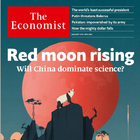
20250615-Oscar Auerbach禁烟先锋-已是平生行逆境,更堪末路践危机
介绍: Oscar Auerbach
Oscar Auerbach, a doctor who stubbed out cigarettes, died on January 15th 1997, aged 92
When Oscar Auerbach established a link between smoking and cancer the everyday world of millions of people started to change. The companionable cigarette, the antidote to the pains of civilisation, the sol...
介绍: Oscar Auerbach
Oscar Auerbach, a doctor who stubbed out cigarettes, died on January 15th 1997, aged 92
When Oscar Auerbach established a link between smoking and cancer the everyday world of millions of people started to change. The companionable cigarette, the antidote to the pains of civilisation, the soldier’s solace, the lovers’ token, was now to be shunned. The cigarette that bears the lipstick’s traces no longer seemed so romantic, now that it offered the prospect of premature death. Those who continued to smoke came to feel persecuted, snatching a guilty puff in the street away from the frowns of their abstemious workmates.
Dr Auerbach almost certainly had no idea of the impact his research was going to make. He was the single-minded scientist sometimes depicted in fiction, buried in his work, emerging from his laboratory only to lecture to students at New Jersey Medical School. He did not enter into the so-called “tobacco wars” waged between anti-smoking campaigners and the cigarette firms that fought hard to defend their markets. Indeed, the publicity given to some of his early findings greatly upset him. The New England Journal of Medicine declined to publish them because of its policy of using only previously unpublished results.
The doctor’s findings were published later in other journals, but some tobacco companies pounced on their earlier technical rejection to claim that they were faulty. Sowing doubts about research into the effects of smoking has been a powerful tactic in the industry’s slow and artfully managed retreat. Even now, many years after Dr Auerbach’s work was made public, the tobacco people are far from conceding defeat. In the rich countries it is generally accepted that the tar and carbon monoxide in cigarettes do no good at all to the lungs (or the heart), and sales of cigarettes have fallen dramatically (although Americans alone still smoke more than a billion a day). In developing countries, in China for example, tobacco consumption is increasing. Deaths from diseases linked to smoking, at present estimated at 3m a year, are rising. On the other hand, an incalculable number of lives have been prolonged as a result of the publicity given to Dr Auerbach’s work. It is not a bad memorial.
As often happens when a discovery’s time has come, the idea of a link between smoking and illness was mooted by a number of scientists. In Britain in 1951 Sir Richard Doll and Sir Austin Bradford Hill began a survey of smoking among some 34,000 male doctors which continued until the 1990s. In America there were similar large-scale studies. Dr Auerbach had studied diseases linked to social conditions since he had become a doctor in 1929 after studying in Vienna and New York. In the 1930s he was among those who sought the best treatment for tuberculosis. In the 1950s, while tuberculosis seemed to have yielded to drugs, cancer was unconquered. Dr Auerbach was a practical man. While, statistically, smoking seemed to be a culprit – the more you smoked the greater the chance of getting cancer – he set out to seek medical evidence of the link. In his research, much of it financed by the American Cancer Society, he looked at tissue changes wrought by cigarette smoking in the lungs of people with cancer. A colleague of his recalled that the doctor might look at 2,000 slides a day. He offered direct, visual proof that cigarette smoke altered cells and that the damage intensified with every puff. Correlation had moved to causation.
In 1964 an increasingly health-conscious American government felt it had enough convincing evidence to take on the cigarette manufacturers. After a report by the surgeon-general on the dangers of smoking, cigarette packets were made to carry a health warning. At first this was the gentle advice, “Smoking may be harmful to your health”. Now it is the no-nonsense “Smoking kills”, in large type. In Britain and some other countries cigarette packets and advertisements have to carry similar labels.
Many of the subsequent findings about smoking came from Dr Auerbach’s research: the possible danger of breathing in someone else’s smoke, the so-called passive smoking; and the good news that if you give up smoking a damaged lung may heal. He trained a pack of dogs to smoke. Of the 86 beagles in the pack, 12 developedcancer. After the New York Times published the story in 1970, every television network in America carried a report of the smoking beagles. The tobacco industry was caught off guard. This story publicised the danger of smoking as nothing else had. The industry rushed to defend itself. Dogs were not the same as humans, its spokesmen said. This was nothing but a “scientific hoax”.
However, there was a public reaction against the use of dogs in the experiment. The sorrowful beagles puffing away touched many a heart. Snoopy, the dog in the “Peanuts” cartoon, was a beagle, for goodness sake. But if Oscar Auerbach has sometimes been remembered as “the beagle man” he hardly noticed. His life was ordered in the laboratory and the lecture room, not in the irrational world outside.
奥斯卡·奥尔巴克
奥斯卡·奥尔巴克,一位曾坚决戒烟的医生,于1997年1月15日去世,享年92岁。
当奥斯卡·奥尔巴克将吸烟与癌症联系起来时,数百万人日常的世界开始发生改变。曾经作为伙伴、文明痛苦的解药、士兵的慰藉、恋人的信物,如今却成了避之不及的对象。沾有唇膏痕迹的香烟,由于可能带来早逝的风险,似乎也不再那么浪漫了。那些继续吸烟的人开始感到自己受到了迫害,他们在街上偷偷抽上一口,以逃避克制的同事们的责备目光。
奥伯查赫博士肯定不知道自己的研究会产生如此巨大的影响。他是一位一心扑在事业上的科学家,有时在小说中被描绘成这样的人,埋头于自己的研究,从实验室里走出来,只是为了给新泽西医学院的学生们做讲座。他没有卷入反吸烟运动者和烟草公司之间所谓的“烟草战争”。烟草公司竭力捍卫自己的市场,而反吸烟运动者则竭力反对吸烟。事实上,奥伯查赫博士早期的一些研究结果所受到的公众关注让他非常不安。《新英格兰医学期刊》拒绝发表这些研究结果,因为该期刊的政策是只发表以前未发表过的研究结果。
医生的研究结果被随后发表在其他期刊上,但一些烟草公司抓住他们早先在技术上的否定,声称这些研究存在缺陷。在烟草行业缓慢而巧妙地撤退过程中,散布对吸烟影响的质疑一直是一种强有力的策略。即使在奥伯查博士的研究成果公开多年后的今天,烟草行业的人仍远未承认失败。在富裕国家,人们普遍接受香烟中的焦油和一氧化碳对肺部(或心脏)毫无益处这一观点,香烟销量因此大幅下降(尽管美国人的吸烟量仍超过每天十亿支)。在发展中国家,例如中国,烟草消费量正在增加。与吸烟相关的疾病导致的死亡人数目前估计为每年300万,而且这一数字还在上升。另一方面,奥伯查博士的研究成果所带来的宣传效果,延长了不计其数人的生命。这可以算是一个不错的纪念。
当一项发现的时机成熟时,通常会有许多科学家提出吸烟与疾病之间存在关联的观点。1951年,在英国,理查德·多尔夫爵士和奥斯汀·布拉德福德·希尔爵士开始了一项针对约3.4万名男性医生的吸烟情况调查,这项调查一直持续到20世纪90年代。美国也进行过类似的大型研究。奥伯查赫博士自1929年在维也纳和纽约学习之后成为一名医生,自那以后,他便开始研究与社会状况相关的疾病。在20世纪30年代,他与他人一道寻找治疗结核病的最佳方法。到了20世纪50年代,虽然结核病似乎已被药物攻克,但癌症依然未被征服。奥伯查赫博士是一个讲求实际的人。虽然从统计学角度来看,吸烟似乎是导致癌症的元凶——吸烟越多,患癌几率就越大——但他还是着手寻找吸烟与癌症之间存在关联的医学证据。在他的研究中,很大一部分经费是由美国癌症学会提供的。在研究过程中,他观察了香烟对组织造成的改变。在癌症患者的肺部中发现吸烟的痕迹。他的一个同事回忆,这位医生可能每天要查看2000张切片。他提供了直接的视觉证据,证明香烟烟雾会改变细胞,而且每吸一口烟,这种损害都会加剧。由此,相关性已转化为因果关系。
1964年,日益注重健康的美国政府感到,已掌握了足够的有力证据来与香烟制造商较量。在总医官发布有关吸烟危害的报告后,香烟包装上被要求印有健康警告。起初,这些警告措辞温和,只是建议“吸烟可能对健康有害”。如今,警告内容已变得斩钉截铁:“吸烟致命”。这些警告以大字体呈现。在英国和一些其他国家,香烟包装和广告上也必须印有类似的警示标签。
后来许多关于吸烟的研究,都源于奥尔巴克博士的研究:吸入他人烟雾可能带来的危险,即所谓的被动吸烟;以及一个好消息,即如果你戒烟,受损的肺部可能会康复。他训练了一群狗吸烟。这群狗中有86只比格犬,其中12只患上了癌症。1970年《纽约时报》发表相关报道后,美国所有电视网都对此进行了报道。烟草行业对此措手不及。该行业的发言人称,狗与人类不同,这只不过是一场“科学骗局”。
然而,公众对实验中使用狗的做法反应强烈。那些悲伤地抽泣的小猎犬触动了许多人的心。看在上帝的份上,《花生》卡通里的狗史努比就是只小猎犬。但如果说奥斯卡·奥尔巴克有时被人们称为“小猎犬先生”,他自己却几乎没注意到这一点。他的生活围绕着实验室和讲台,而非外界那个不理性的世界。
更多节目 全部>
-
Vol.1419
-
20250523-University-坑灰未冷山东乱, 刘项原来不读书
Vol.1417
-
Vol.1416
-
20250425-Self-awareness 淡月浮香暗自知
Vol.1415
-
Vol.1414
